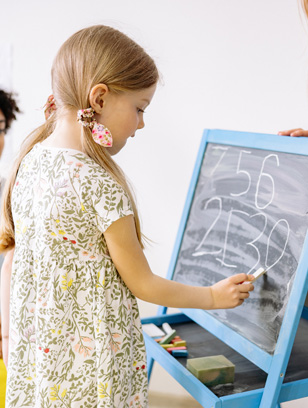Response to Intervention (RTI) is a proactive method of identifying and supporting students with behavior or learning needs.
RTI begins with high-quality, evidence-based whole class instruction. Struggling learners identified through assessment are provided with interventions. Adults closely monitor student progress toward learning goals, adjusting interventions as needed. Variables such as the intensity and duration of the interventions are based on the student’s response.
If a child doesn’t show progress, he may be referred for further testing for a learning disability. At any point in this process, parents may request a formal evaluation to determine eligibility for special education.
In this article, we’ll provide useful information, tips, and sample interventions to use at your school.
Levels of Intervention
Typically, the RTI process follows a three-tiered model of support. Some schools call this Multi-Tiered System of Support (MTSS) instead of Response to Intervention.
Tier 1-High Quality Instruction and Screening
In Tier 1, all students receive high-quality instruction. This ensures that learning difficulties are not related to inadequate instruction.
Effective Tier 1 strategies may include:
- State the objective (goal for the day)
- Use visuals and hands-on representations
- Provide feedback and reinforcement
- Utilize graphic organizers
- Assign summaries and note-taking
- Create structured groups
- Give appropriate wait time
- Accommodate different learning styles
- Restate and reinforce the learning objective
All students are periodically screened to identify struggling learners. Students who do not respond well to Tier 1 strategies move to Tier 2.
Tier 2- Targeted Intervention
About 15 percent of students fall into this category at any given time. Tier 2 interventions take place in small groups, with interventions tailored to the needs of the students.
Tier 2 strategies may include:
- Increased direct instruction
- Break information into “chunks” or steps
- More opportunities for practice
- Slower pace
- More time spent modeling
- No new skills taught until the old skill is mastered
- Frequent progress monitoring and re-teaching
Often, Tier 2 instruction is delivered to small groups of students 2 or 3 times weekly for 30-minute sessions. The group may receive instruction from the general teacher or move to a different classroom with a different teacher. Tier 2 interventions do not replace regular instruction; they complement it.
Length of time for these interventions varies but generally does not exceed a grading period.
Tier 3-Intensive Individualized Interventions
If students don’t respond well to Tier 2 interventions, they move to Tier 3. Tier 3 comprises about 5 percent of students at any given time.
Tier 3 interventions are individualized based on learning styles. Students may still learn in very small groups, but many students receive one-on-one instruction at this point. Teachers trained to help students with cognitive learning difficulties often deliver these interventions.
Tier 3 strategies include:
- Students talk through their thought process; teacher troubleshoots
- More time allotted for interventions
- Teacher works through problems and models think-aloud
- Many opportunities to give and receive feedback
- Student works on memory skills
- Student learns to ask and answer questions about material
If the student is successful with these intensive interventions, he returns to Tier 2. If not, he may be screened for special education.
Pair Response to Intervention with Connection
Jill Molli, a former guidance counselor and behavior disorder instructor who now works with a top SEL program, emphasizes pairing safety and connection with RTI.
Molli explains that learning and behavior occur in the context of relationships. If the child does not have positive relationships and does not feel safe or comfortable, interventions are unlikely to succeed. This is especially true for children with behavioral needs.
A child who exhibits physical behaviors needs safety. Safety can be established through strategies like:
- Structure and visual routines
- Adult assertiveness (not passiveness or aggressiveness)
- Strategies to teach active calming
- Calm, empathetic, and nonjudgmental responses from adults
- Language of safety (e.g., “My job is to keep you and the other students safe”)
Children who engage in power struggles need connection. Often, behaviors described as “attention-seeking” are actually “connection-seeking.” Strategies to provide connection include:
- Classroom rituals that bond students and teacher (e.g. greeting ritual, goodbye ritual, ritual to welcome back an absent child)
- Encouragement for even small successes
- A classroom job that allows the child to be of service to others
- Offer empathy, helping to end the power struggle
- Provide 2-3 choices to narrow focus in overwhelming situations
- Help the child connect with other students
Once the child feels safe and connected to others, interventions are more likely to be successful. In writing an RTI plan, Molli suggests focusing on the behaviors you do want to see rather than the behaviors you don’t want to see. Then, think about how you can help the child succeed in reaching these goals. What skills does he need to learn? What strategies may help?
Response to Intervention: Final Thoughts
Whether a child’s needs are academic or behavioral, effective RTI plans can help. RTI helps schools allocate resources to improve student outcomes. The proactive process identifies struggling learners so that schools can intervene before the child falls behind. It also helps identify those who may need additional services.
Successful Response to Intervention programs share quality instruction, frequent assessment and progress monitoring, and the ultimate goal of helping students succeed.

